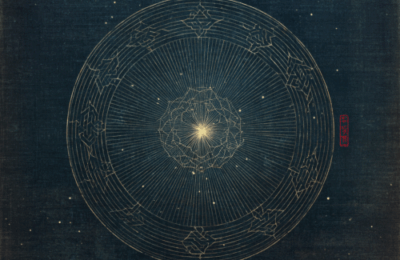《楚辞》,是诗歌与文明节奏的源头。
在这里,我为每一首楚辞谱曲,并写下文字,让古老的辞章在今日再次发声。
这是一部跨越千年的乐章,也是一段个人与文明的共鸣之旅。
English
Chu Ci is the ancient source of poetry and rhythmic civilization.
Here, I compose music for each ode and write accompanying texts, allowing these verses to speak anew in our time.
It is both a millennia-spanning symphony and a personal journey of resonance with civilization.
Deutsch
Die Chu Ci sind die uralte Quelle von Poesie und rhythmischer Zivilisation.
Hier vertone ich jedes Lied und schreibe begleitende Texte, sodass diese Verse in unserer Zeit wieder erklingen.
Es ist zugleich eine über Jahrtausende reichende Symphonie und eine persönliche Reise im Einklang mit der Zivilisation.

《上博简〈桐颂〉〈兰赋〉|楚辞美学的两极共生与双生火焰》本篇来自《上博简·第八册》的两篇核心文献《桐颂》《兰赋》,
一桐一兰,一刚一柔,一入世一出世,构成楚辞美学最深的“双生源代码”。《桐颂》写官道之桐,其“深立坚树”“刚其不贰”,象征秩序、责任与政治伦理;《兰赋》写幽麓之兰,其“摇落不失厥芳”“芳馨达闻”,守护清洁、独立与灵魂的本真。这对看似对立的意象,其实是楚文明深层结构的“双生火焰”:
桐为骨,兰为魂;桐建秩序,兰养灵气;
二者并行,方成楚辞那种在张力中升腾的极致之美。本文以节奏文明体解析两篇竹简的哲思脉络,并在尾之声引入楚人宇宙观:
当入世与出世、刚直与清香、骨与魂的五脉在死后归一,桐与兰的双焰终将合为璇玑之光。
Drawn from Shanghai Museum’s Bamboo Manuscripts (Volume 8),
this essay explores two essential texts—Tong Song (桐颂) and Lan Fu (兰赋).
One praises the paulownia on the official road; the other, the orchid in the secluded valley.
Together they form the dual aesthetic engine of early Chu literature.
Tong Song embodies political order, integrity, and responsibility.
Lan Fu preserves purity, independence, and inner authenticity.
What appear to be opposites are, in fact, “twin flames”:
the paulownia as structure, the orchid as spirit;
the former builds the world, the latter breathes meaning into it.
This essay interprets both texts through the lens of rhythm-civilization writing,
and concludes with a cosmological insight rooted in Chu thought:
when the fivefold dimensions of life—duty, purity, intention, heart, and soul—unify beyond death,
the twin flames merge into a single star at the axis of the heavens: the Xuanji.

《諸神復活》是一場穿越時空的節奏召喚,以《楚辭·九歌》為原型,結合AI譜曲與人類感知,為十一位沉睡兩千年的神祇重塑聲音與節拍。這不僅是音樂計劃,更是節奏文明觀的一次實驗性實踐:在語言平面化與文化碎片化的時代,以節奏為線索,重建文明的深層律動。每一首歌對應一位神明的獨特節奏結構,從東皇太一的宇宙初響,到湘夫人的香霧回身,皆為文化之“呼吸”再生的回聲。當神祇沉默了兩千年,我們是否還能聽見他們的聲音?這篇博客,記錄的不只是創作過程,而是一場關於文明節拍能否被再次聽見的實驗與提問。“Resurrection of the Gods” is a rhythmic invocation across time and space, inspired by The Nine Songs from The Songs of Chu, integrating AI-generated compositions with human sensibility.
It reawakens divine voices that have slumbered for two millennia, reshaping sound and rhythm.
More than a musical project, it is an experiential practice of Rhythm Civilization: in an age flattened by language and fragmented by culture, it seeks to restore the deep pulse of civilization through rhythm and resonance.
Each song corresponds to a deity, forming unique rhythmic structures — from the cosmic resonance of the Sun Emperor to the fragrant return of the Lady of the Xiang River — all echoing the rebirth of cultural “breath.”
If the divine voices have been silent for two thousand years, can we still hear their echoes now? This blog records not merely a creative process, but an experiment and inquiry into whether the pulse of civilization can still be heard through rhythm itself.


